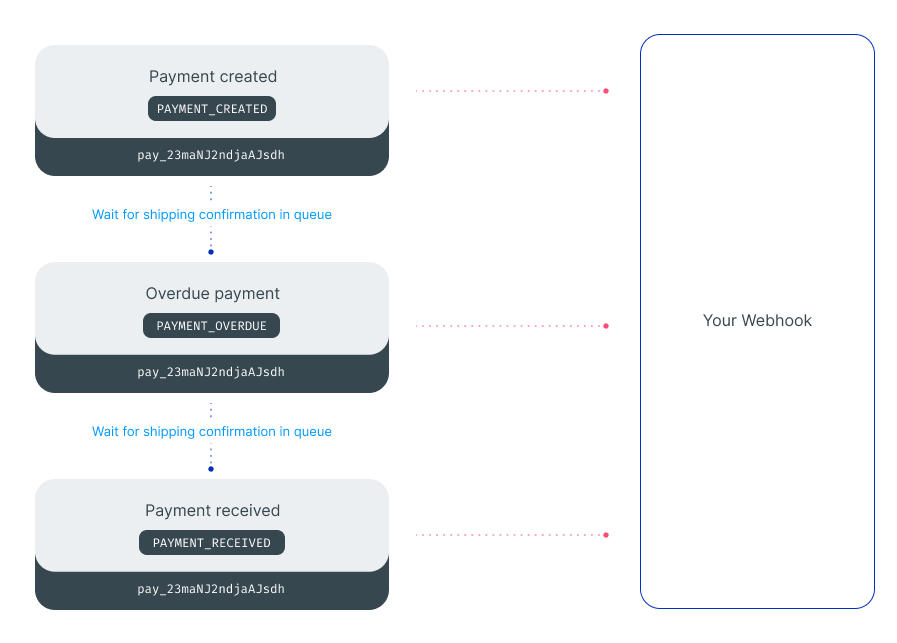Send types
Webhooks have two types of delivery available: sequential and non-sequential.
What is the difference between the types of delivery?
In Sequential delivery, events are sent in the order they occurred. On the other hand, in Non-Sequential delivery, events are sent out of order and will flow better since you don't have to wait for one delivery to finish before starting another.
Sequential Delivery
A common example of sequential delivery is when you want the events to arrive in the same order that your customer performed the actions.

In the example above, we can see that the events of the same payment are sent in the sequence they happened. This way, we know that the payment of the charge was made after the due date.
Non-Sequential Delivery
When you have one or a few events selected for a Webhook, you can opt for Non-Sequential delivery. For example, a Webhook to check for success in transfers, if you only configure events to confirm whether a transfer was confirmed or canceled, you will only receive one event per entity and do not need to worry about the sequence in which the events will be sent.

In Non-Sequential delivery, events are sent more quickly, without waiting for others to complete, and can come from several different entities.
Updated 4 months ago